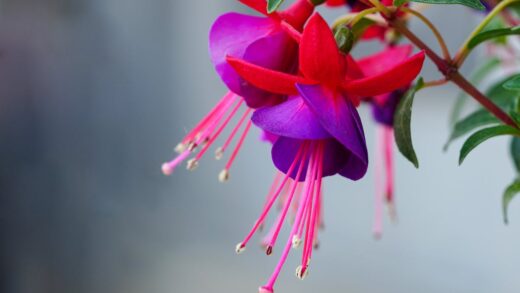The relationship between the German iris and sunlight is direct and unequivocal: abundant light is the primary catalyst for vigorous growth and prolific flowering. These classic perennials are true sun-worshippers, requiring a minimum of six to eight hours of direct, unfiltered sunlight each day to perform to their full potential. This substantial light exposure fuels the process of photosynthesis, allowing the plant to create the energy it needs to build strong rhizomes, healthy foliage, and, most importantly, a spectacular display of blooms. When deprived of adequate sunlight, the German iris will signal its displeasure through a variety of clear, albeit disappointing, symptoms.
The location chosen for planting is therefore the most critical decision in meeting the light requirements of this plant. An open, south-facing position in the garden, away from the shadows cast by buildings, trees, or large shrubs, is the ideal scenario. While irises are adaptable and may survive in locations with less sun, their performance will be a pale imitation of what it could be. In partial shade, the plant will prioritize vegetative growth over reproduction, often resulting in lush, elongated foliage but with a frustrating lack of flowers. The energy simply isn’t there to support the demanding process of blooming.
Sunlight plays a particularly vital role in the health of the rhizome itself. The unique practice of planting iris rhizomes with their top surfaces exposed to the air is directly related to their need for light and warmth. The sun’s rays shining directly on the rhizome help to keep it dry, which is a key factor in preventing the onset of bacterial and fungal rots. Furthermore, it is believed that this direct exposure to sunlight is a crucial trigger for the initiation of flower bud development within the rhizome during the summer months. A rhizome that is shaded by overhanging plants or buried under soil or mulch is a rhizome that is unlikely to bloom.
While full sun is the general rule, a small degree of nuance can be applied in extremely hot climates. In desert regions or areas with intense, scorching summer afternoons, a location that provides direct sun for the majority of the morning and early afternoon, followed by light, dappled shade during the hottest part of the day, can be beneficial. This can help to prevent the delicate flower petals from fading or scorching prematurely and can reduce heat stress on the plant. However, even in these climates, the total duration of direct sun should still meet or exceed the six-hour minimum for optimal performance.
The fundamental role of sunlight for irises
Sunlight is the fundamental energy source for nearly all plant life, and for the German iris, its role is particularly pronounced. The process of photosynthesis, which occurs in the leaves, converts light energy, water, and carbon dioxide into glucose—the sugar that fuels the plant’s growth and metabolic functions. A German iris that receives ample sunlight can photosynthesize at a high rate, producing a surplus of energy. This excess energy is then transported to the rhizome and stored as complex carbohydrates, creating a rich reserve that will be used to power the next season’s growth and flowering.
The quantity and quality of light directly influence the physical structure of the plant. In full sun, the iris develops strong, upright, sword-like foliage of a healthy green color. The tissues are firm and resilient, making the plant less susceptible to physical damage and disease. The flower stalks, or scapes, are sturdy and well-supported, capable of holding the large, heavy blooms aloft. This robust structure is a direct result of the plant having sufficient energy to build strong cellular walls and tissues.
Furthermore, sunlight acts as a powerful, natural sanitation agent. The ultraviolet rays in sunlight help to suppress the growth of fungal spores and bacteria on the surface of the leaves and, crucially, on the exposed rhizome. A sunny, open, and airy location is far less hospitable to the pathogens that cause common iris diseases like leaf spot and rhizome rot, which thrive in damp, shady conditions. This is why irises planted in full sun are generally healthier and less prone to disease than their shade-grown counterparts.
The intensity of the light also plays a role in the color saturation of the flowers. While intense, direct sun in hot climates can sometimes cause fading in darker-colored varieties, in most temperate regions, good light exposure leads to richer, more vibrant flower colors. The pigments that give the iris its breathtaking range of hues are produced more effectively when the plant is healthy and photosynthesizing efficiently. In essence, from the energy stored in the rhizome to the strength of the flower stalk and the color of the petals, every aspect of the iris’s beauty is fundamentally powered by sunlight.
Optimal sun exposure for vigorous growth
To achieve the most vigorous growth and an abundance of flowers, the German iris should be planted in a location that receives at least six hours of direct sunlight per day. Eight hours or more is even better, particularly in more northern latitudes where the sun’s intensity is lower. This is not a suggestion but a core requirement for the plant to complete its annual cycle successfully. The ideal placement is in an open area where the plant will receive sunlight throughout the morning and into the afternoon, ensuring it has a long period for photosynthesis during the most productive part of the day.
The timing of the sun exposure can also be a factor. Morning sun is particularly beneficial because it helps to quickly dry any dew or moisture from the leaves, which is a major deterrent to the development of fungal diseases. A location that receives sun from early morning until mid-afternoon is often considered perfect. This provides the necessary duration of light while potentially offering some respite from the most intense heat of the late afternoon in hotter climates, which can reduce stress on the plant and help to prolong the life of the delicate blooms.
When planning a garden bed, it is important to consider the mature size of surrounding plants. A spot that is sunny when the irises are first planted can quickly become shady as nearby shrubs or trees grow larger. It is crucial to position irises where they will not be overshadowed by faster-growing neighbors. They should be placed at the front of a border or in a dedicated bed where their access to sunlight will remain unobstructed for years to come. This long-term planning prevents the need to transplant the irises later due to encroaching shade.
The visual evidence of optimal sun exposure is unmistakable. The plant will form a dense, healthy clump of upright leaf fans. The foliage will be a vibrant green, free from the pale or yellowish cast that can indicate a lack of light. In the spring, the clump will produce a multitude of strong, thick flower stalks, each bearing several buds. This robust and floriferous appearance is the direct result of providing the plant with the sunlight it craves, allowing it to reach its full genetic potential.
The consequences of inadequate light
When a German iris is planted in a location with insufficient sunlight, the consequences are predictable and readily apparent. The most significant and disappointing result is a reduction or complete cessation of flowering. The plant, sensing that it does not have enough energy to successfully complete the demanding process of reproduction, will enter a state of survival, focusing all its limited resources on maintaining its foliage and rhizome. It may continue to produce healthy-looking leaves for several years, but it will consistently fail to produce flower stalks. This is the most common reason gardeners report that their irises are “all leaves and no flowers.”
The foliage itself will also show clear signs of light deprivation. Instead of being strong, upright, and sword-like, the leaves will become weak, elongated, and floppy as they stretch and strain towards the available light source, a phenomenon known as etiolation. The color of the foliage may also be a paler shade of green than is typical, indicating a lower concentration of chlorophyll. This weakened foliage is not only less attractive but is also more susceptible to pests and diseases.
In conditions of significant shade, the rhizome’s health will also be compromised. Without the drying and warming effect of direct sun, the rhizome and the surrounding soil will remain damp for longer periods. This creates a perfect environment for the development of fungal and bacterial rots, which can quickly become fatal. The lack of energy production also means that the rhizome will be smaller and less robust, with fewer offshoots or “increases” being produced each year. Over time, the entire clump will lose its vigor and may eventually dwindle and die out.
In summary, inadequate light leads to a cascade of negative effects. The plant is unable to produce enough energy, which leads to a lack of flowers. This energy deficit also results in weak, etiolated foliage and a small, vulnerable rhizome. The shady, damp conditions further increase the risk of devastating rot diseases. For these reasons, attempting to grow German irises in a shady location is an exercise in futility. If a non-blooming iris is growing in a spot that receives less than six hours of sun, the only effective remedy is to transplant it to a sunnier location.
Light considerations in hot climates
While the “full sun” mandate is central to iris culture, gardeners in regions with exceptionally hot and intense summers, such as the desert southwest of the United States or Mediterranean climates, can benefit from a more nuanced interpretation. In these areas, the sheer intensity of the late afternoon sun can be stressful for the plants. The heat can scorch the delicate flower petals, causing them to wilt, fade, and “melt” prematurely, significantly shortening the bloom season. The foliage can also show signs of stress, such as browning or crisping at the tips.
In these specific hot climates, the ideal location is one that provides abundant morning and early afternoon sun but offers some light, filtered shade during the hottest hours of the day, typically from about 3 PM onwards. This can be achieved by planting irises on the east side of a building or wall, or where they will be shaded by a distant tree in the late afternoon. This arrangement ensures the plant still receives the requisite six to eight hours of direct sun needed for energy production but is protected from the most extreme and potentially damaging heat and light.
It is important to emphasize that this is not a recommendation for deep shade. The shade should be light and dappled, perhaps from a high-canopied tree, rather than the dense shade cast by a solid structure or a low-growing shrub. The goal is to reduce the heat load on the plant, not to deprive it of light. The rhizomes must still receive ample sunlight and warmth, and the foliage needs plenty of light for photosynthesis. The balance is delicate but achievable with careful site selection.
Gardeners in these regions should also pay close attention to water management, as plants in full, intense sun will lose moisture more rapidly. While irises are drought-tolerant, ensuring they receive adequate water during the critical post-bloom growth period is even more important in hot climates. A layer of light-colored organic mulch, such as straw, applied around but not touching the rhizomes, can also help to cool the soil and conserve moisture without creating the damp conditions that lead to rot. This combination of strategic siting and thoughtful soil management can help irises thrive even in the most challenging sunny and hot environments.


















